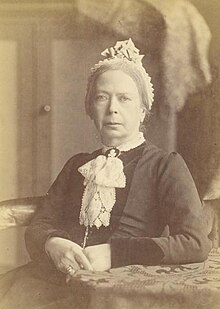Frances Buss
| Frances Buss | |
|---|---|

Buss, c. 1882
|
|
| Born |
Frances Mary Buss August 16, 1827 London, United Kingdom |
| Died | December 24, 1894 (aged 67) London, United Kingdom |
| Nationality | English |
| Occupation | Headmistress, pioneer |
| Years active | 1848-1894 |
| Known for | One of the first headmistresses at North London Collegiate School for Ladies |
| Parent(s) |
|
Frances Mary Buss (16 August 1827 – 24 December 1894) was a headmistress and an English pioneer of women's education.
The daughter of Robert William Buss, a painter and etcher, and his wife, Frances Fleetwood, Buss was one of six of their ten children to survive into adulthood. Her grandparents, whom she was visiting in Aldersgate, sent her to a private school housed in the most basic accommodation "...to get me out of the way". Next she was sent to a similar school in Kentish Town which she remembered as simply consisting of children learning Murray's Grammar.
Aged 10 she attended a more advanced school in Hampstead; by the age of fourteen she herself was teaching there and by sixteen she was occasionally left in charge of the school.
Her father's career as an artist being at times unsuccessful, to help the family finances her mother set up a private school in Clarence Road, Kentish Town, in 1845, at which Frances assisted, and which was based on the ideas of Johann Heinrich Pestalozzi.
During 1848–9, she attended evening lectures at the newly opened Queen's College in Harley Street, London. She was taught by F. D. Maurice, Charles Kingsley, and R. C. Trench, and gained certificates in French, German and Geography. To Dorothea Beale, a contemporary at Queen's, she described the education she had gained there as opening ‘a new life to me, I mean intellectually’.
The school was renamed the North London Collegiate School for Ladies and moved to larger premises in Camden Street on 4 April 1850. Buss was its first Headmistress and remained so for the rest of her life. Under her headship, and with the help of family members, the school became a model for girls' education. By 1865 the school had 200 day girls, with a few boarders, but was still run as a private, family concern, with her father Robert William Buss and her brother Septimus Buss teaching Art and Scripture respectively.
...
Wikipedia
